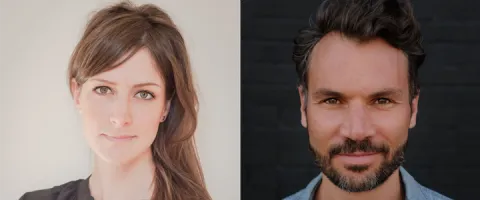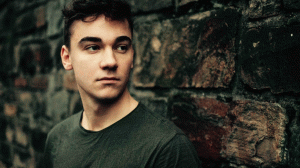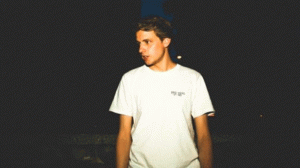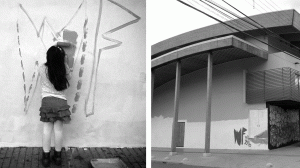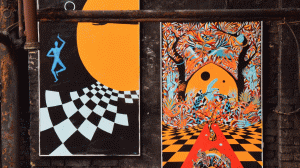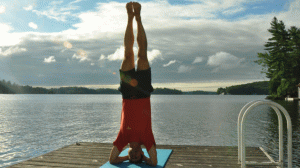Originally published May 25, 2016
We live in a time with a lot of digital noise. There are a lot of people and initiatives trying to be heard. In order to stand out, your organization’s design, language and brand need to speak to the people you are hoping to attract.
Don’t get us wrong - we’re all about the impact, but creative design and storytelling are in fact critical elements in driving engagement and getting people onboard with your cause. If you want people to donate or participate in your service, they need to be able to understand right away what added value you create and how they can get involved.
Enter Radish Lab. Radish Lab is an interactive creative agency that is committed to delivering great designs for really nice people. Their goal is to change the world through storytelling and design.
We were able to sit down with Alana and Adam, the masterminds behind Radish Lab, to talk about why good design matters and how to overcome some of the most common creative challenges that startups and organizations face.
What sparked the idea to create Radish Lab? How did it all begin?
Alana: Radish Lab began very organically. I actually started the company as an umbrella for my various freelance endeavors. As I started to get more work, I needed help and teamed up with our now Technical Director and partner Edward Wisniewski. We started doing digital storytelling for whoever wanted to work with us — we built websites, produced stop-motion animation, wrote content and took headshots. Interestingly, this created a flexible foundation for us to focus as a social impact agency. We wanted to be working on projects that let us solve interesting challenges and contribute to meaningful causes.
What sets Radish Lab apart from other creative agencies?
Alana: Radish's strength is in creative storytelling. Our clients are nonprofits, cultural organizations, educational institutions and social business and they aren't always focused on how best to tell their own stories. They're investing time and money for their causes (which is good!), but not always thinking about how design and story engagement can help them achieve their own organizational goals, be those funding, membership, outreach, etc. We try and look at our client's projects very holistically by first identifying what the problems and weaknesses are, and then building complete solutions around those challenges.
Adam: We've also got a small, diverse team and base our workflows on collaboration. We're able to help organizations with every aspect of digital strategy and storytelling. We work on branding and identity, write and edit copy, produce videos and data visualizations, design information architecture and UX, create comprehensive print and website designs, formulate and implement technical approaches and code. This lets us target the areas where organizations most need our help, and create smart strategic plans. We also place a lot of emphasis on project management and building friendly, productive, responsive relationships with our clients. We like to say we do good design for nice people.
So tell us, why does good design matter?
Adam: Organizations have to understand that in many instances they are perceived by their digital design choices, both aesthetically and experientially. Because of the Web, more people encounter and understand design ideas on a daily basis. Whether they're aware of it or not, users increasingly understand that there's a relationship between graphic design and experience design, between what they see on a screen and how they use it. The dominance of online interaction makes interplay of form and function ubiquitous. Organizations that embrace good design understand that it is essential to their ability to connect with their target audience, and in many cases their funders.
Why did you make the choice to expand and set up shop in Berlin?
Adam: First and foremost, we had an opportunity that we couldn't pass up. But once we decided to seize the opportunity, we saw that there were a lot of great reasons to build something in Berlin. Obviously, there's a vibrant startup scene here. There's a great appreciation of design and highly functional systems. Engagement with social causes feels deeply integrated into German society, although this doesn't necessarily mean that there are more social-impact organizations. But we think it translates into a lot of opportunities to work with companies and organizations that embrace social change, even if it's not their core mission. Like Brooklyn, Berlin is also a creative capital, so there will be no shortage of talent once we start to grow.
Alana: We're also interested in expanding our experience and opportunities as a creative firm. We're driven and inspired by the projects we work on, and our clients' passion. We think that by diversifying who we work with and where we work will give our team more ideas about how to creatively solve problems, and more inspiration to innovate.
What advice do you have for other small businesses that are undergoing expansion?
Alana: We've grown in all sorts of ways in the last four years; our team has changed, our projects have evolved, our offices have gotten bigger, our challenges have shifted. Running a business is always so much about being able to adapt and pivot. You have to fight hard not to get stuck or left behind because you weren't able to react quickly enough. We're in the process of expanding Radish Lab in Berlin, growing a team and building trust and a client portfolio, so it feels like we're starting up all over again in some ways. While I'd hesitate to give advice to anyone fighting their own fight, I will say that always reminding ourselves of what we know has helped us stay grounded and positive. It's easy to get dislodged and discombobulated when you're in a new city, but our business model is still the same. Our values haven't changed and the work we're doing speaks for itself.
Tell us about your new pilot project Discovery Lab Beta, what’s the idea behind it?
Alana: We started Discovery Lab Beta for two key reasons. The first is that we feel like some of the clients we most want to work with — the scrappy, small-but-mighty change-driven projects in the world — often cannot afford to work with an agency like Radish Lab. At the same time, they're often the ones that need the most help. DLB's first mission is to connect interesting social impact projects with high-level resources, brainpower, and expertise to quickly solve problems, instead of sitting on them. The second reason we started DLB was to give our team access to think more creatively on a regular basis. Our designers and strategists get exposure to a really interesting mix of personalities, problems, and obstacles, which give them opportunities to build their creative and professional muscles. The more problems we're exposed to, and the more freedom we have in our approaches, the better we get at solving a wide range of challenges.
What are some common creative challenges that entrepreneurs and professionals face when undertaking creative projects and what would be your advice for overcoming them?
Adam: As organizations grow, it can get harder to maintain consensus about identity and aesthetic, especially when it comes to design. People who have great entrepreneurial ideas or know how to tackle worthy causes don't always have strong ideas about design or storytelling. And a diversity of opinions within your team doesn't always necessarily help. It can get confusing figuring out whose lead to follow on digital strategy. The fact that many organizations have complex hierarchical structures or boards can complicate matters further. We've found that nominating a creative project lead within your organization helps enormously to streamline decision making. You still want to hear the voices of all stakeholders, but a creative project manager helps to set the pace, establish workflow and approval processes and build a dynamic collaboration with your creative partner.
What makes you a changer?
Adam: Alana started the business with a premise that may sounds a little naive, but it's still right there on our website: we focus on great design for really nice people. We also believe that good storytelling can truly change the world. We're not talking about a revolution. We're talking about helping people who have the will and the skill to do good to reach a broader audience and have more impact. When nice people pool their skills and passions and work together towards social change, the world becomes a better place. Good design is an agent of change.
